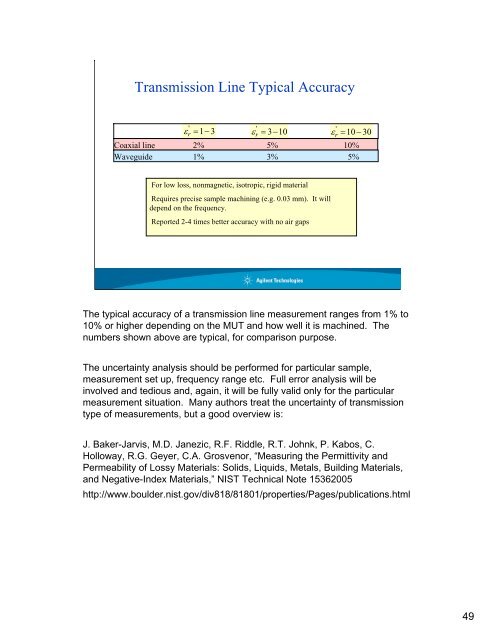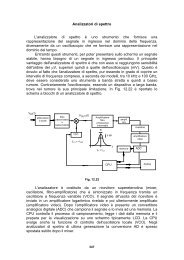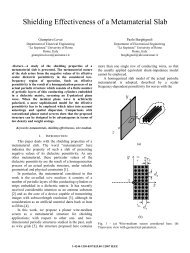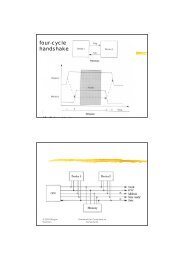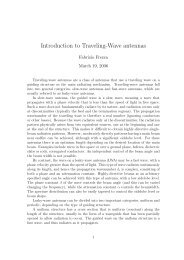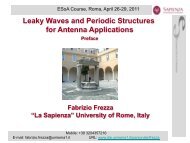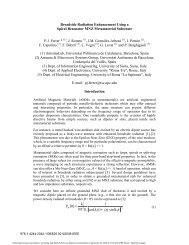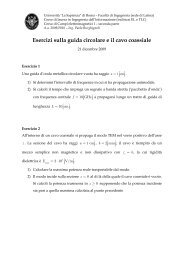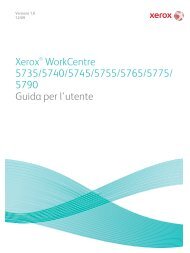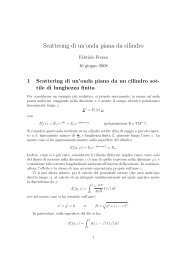Materials Measurement Phil Bartley Shelley Begley
Materials Measurement Phil Bartley Shelley Begley
Materials Measurement Phil Bartley Shelley Begley
- No tags were found...
You also want an ePaper? Increase the reach of your titles
YUMPU automatically turns print PDFs into web optimized ePapers that Google loves.
Transmission Line Typical Accuracy'r'r'ε rε = 1−3 ε = 3−10= 10−30Coaxial line 2% 5% 10%Waveguide 1% 3% 5%For low loss, nonmagnetic, isotropic, rigid materialRequires precise sample machining (e.g. 0.03 mm). It willdepend on the frequency.Reported 2-4 times better accuracy with no air gapsThe typical accuracy of a transmission line measurement ranges from 1% to10% or higher depending on the MUT and how well it is machined. Thenumbers shown above are typical, for comparison purpose.The uncertainty analysis should be performed for particular sample,measurement set up, frequency range etc. Full error analysis will beinvolved and tedious and, again, it will be fully valid only for the particularmeasurement situation. Many authors treat the uncertainty of transmissiontype of measurements, but a good overview is:J. Baker-Jarvis, M.D. Janezic, R.F. Riddle, R.T. Johnk, P. Kabos, C.Holloway, R.G. Geyer, C.A. Grosvenor, “Measuring the Permittivity andPermeability of Lossy <strong>Materials</strong>: Solids, Liquids, Metals, Building <strong>Materials</strong>,and Negative-Index <strong>Materials</strong>,” NIST Technical Note 15362005http://www.boulder.nist.gov/div818/81801/properties/Pages/publications.html49


